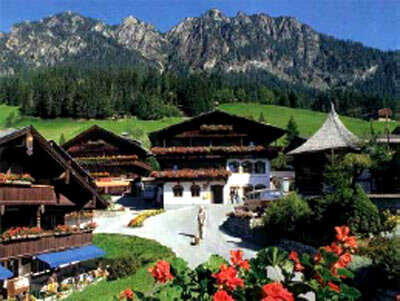Alpbach students reach for the stars
The Alpbach Summer School 2011, held 19-28 July, attracted 58 science and engineering students to the beautiful Austrian Alps. The theme of this year’s 10-day educational event was 'Star Formation across the Universe'.
The purpose of the summer school is to foster the practical application of knowledge derived from lectures, to develop organisational and team-work skills and to encourage creativity. As usual, the programme was divided into two sections.
The first part of the summer school was taken up with 20 lectures which covered the theoretical aspects of star formation and evolution, results from ground-based telescopes and space observatories, and techniques to observe new-born stars. Some lectures also provided the students with background information on engineering.

The lectures provided an essential foundation for the workshops, the other key element of the programme, which occupied more than half of the available time. During the workshops, the students were divided into four teams and then asked to define and design their own space mission, supported and assisted, when necessary, by the summer school lecturers and 12 tutors.
Their mission concepts had to address the scientific case and rationale, the onboard instrumentation, the mission design, the design of the space and ground segment, and the main subsystems. They also had to include a cost estimate and a tentative development plan, with risk assessment and options for descoping.
Their innovative projects included:
Advanced European Galaxy Imager & Spectrograph (AEGIS): a mission to fly a UV imager and spectrometer to observe starburst galaxies with redshifts between 0.5 and 1.5, thought to be associated with the period of peak star formation.
Far Infrared Observatory (FIO): a mission to focus on the early stages of star formation through infrared interferometry conducted by spacecraft flying in formation.
Project for InfraRed Astrometry aNd High Accuracy (PIRANHA): a mission to make a full inventory of stars and substellar objects in the plane of the Milky Way, using astrometry, photometry and radial velocity infrared measurements.
T-Tauri & HErbig Ae/Be stars Study with Echelle Uv Spectrograph (THESEUS): a mission to obtain high resolution spectra of pre-main sequence stars at UV wavelengths, using two spectrographs, a spectropolarimeter and an imager.
The results

Each team presented its work to a jury of experts chaired by André Balogh from the International Space Science Institute, ISSI. The jury was most impressed with the dedication and hard work of the students, as well as the excellence of their scientific and technical proposals.
The Summer School Oscar for the Best Science Case was shared between the AEGIS and FIO teams. The winner of the Best Technical Case and Competitiveness categories was the THESEUS team, while the Best Presentation award was given to the PIRANHA team. Another Jury Chairman’s Oscar was awarded to the FIO mission.
15 of the students will be selected, on a voluntary basis, to continue working on the THESEUS mission. This post-Alpbach event, made possible by a grant from ESA, will be organised by the Austrian Research Promotion Agency (FFG) and take place in Obergurgl, 6-11 November 2011.

The Alpbach Summer School 2011 was organised by the Aeronautics and Space Agency of the FFG. It was co-sponsored by ESA and the national space authorities of its Member and Cooperating States, with the support of the International Space Science Institute (ISSI) and Austrospace.




